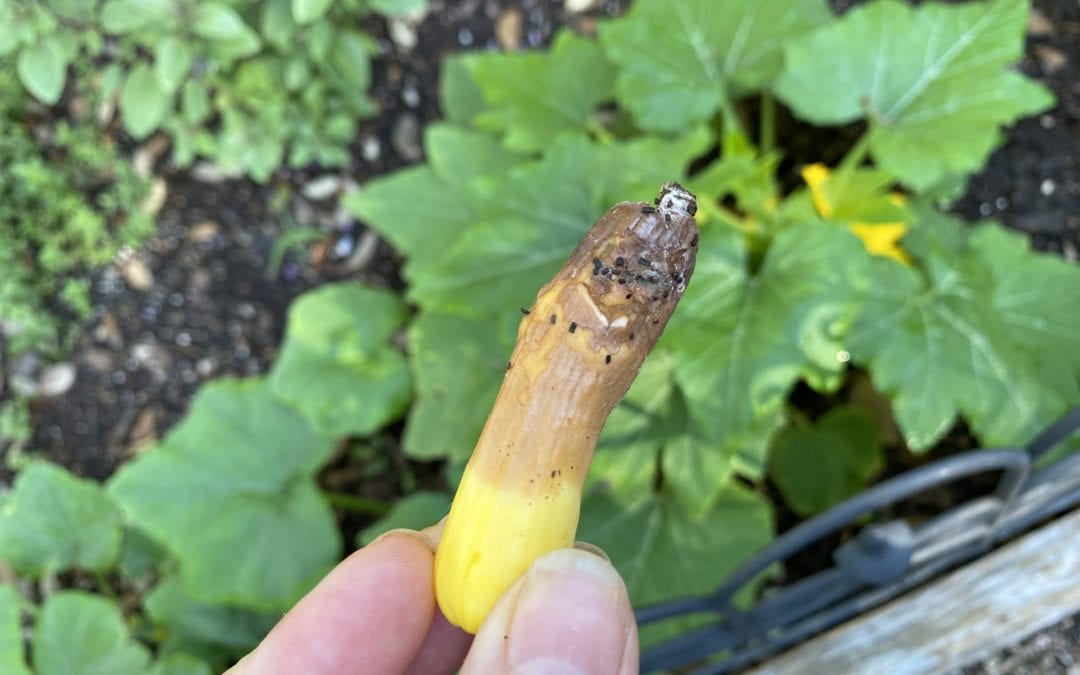If you’ve ever harvested a zucchini only to find a dark, mushy spot at the blossom end, then you’ve encountered the frustrating phenomenon known as zucchini end rot. But fear not, understanding the factors behind this unsightly issue can help you prevent it from ruining your entire crop. In this article, we’ll explore the various causes of zucchini end rot, giving you the knowledge you need to keep your zucchinis healthy and blemish-free. So, grab your gardening gloves and let’s get to the root of the problem!
Factors affecting zucchini end rot
Zucchini end rot can be a frustrating problem for gardeners, but understanding the factors that contribute to this condition can help in its prevention. Several factors can affect zucchini end rot, including calcium deficiency in the soil, imbalance in soil pH, inconsistent watering practices, root damage or pruning, excessive heat and high temperatures, imbalanced nutrient levels, poor drainage conditions, pest infestation, improper fertilization, and genetic susceptibility to end rot. By addressing these factors, you can minimize the risk of zucchini end rot and enjoy healthy, bountiful harvests.
Symptoms of zucchini end rot
Identifying the symptoms of zucchini end rot is crucial for timely intervention and prevention. The most common symptoms of this condition include dark brown or black lesions on the blossom end of the fruit, soft and mushy areas on the fruit, progressive decay of the affected area, limited fruit growth and small size, and premature fruit drop. If you notice any of these symptoms on your zucchini plants, it is essential to take action to mitigate the impact and prevent further damage.
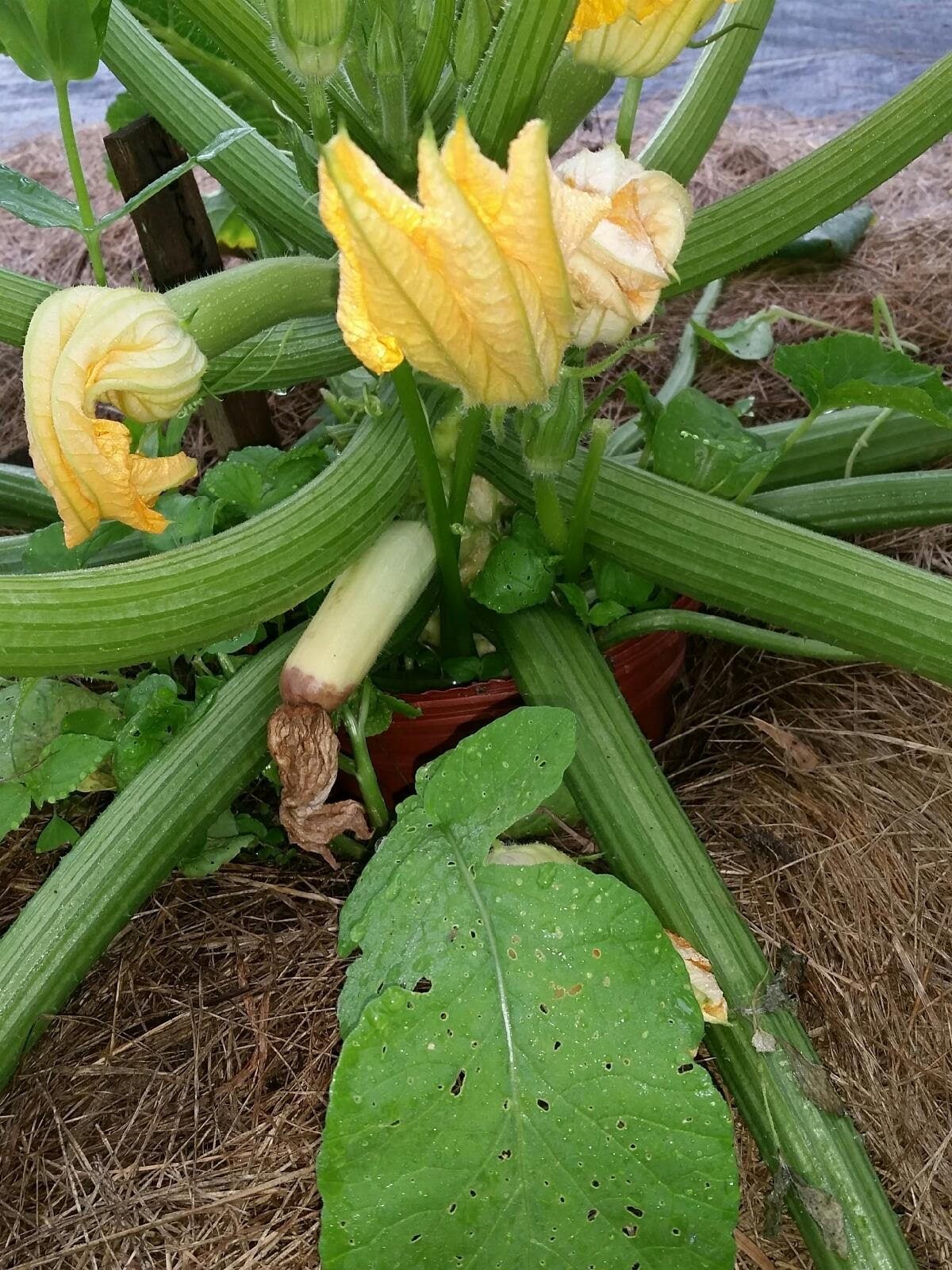
Calcium deficiency in the soil
One of the primary factors contributing to zucchini end rot is calcium deficiency in the soil. Calcium plays a critical role in cell wall development and overall fruit health. Without sufficient calcium, zucchini fruits can develop end rot. The effects of calcium deficiency on zucchini plants include the formation of dark brown or black lesions on the blossom end, which gradually enlarge and lead to fruit decay.
Causes of calcium deficiency in the soil can include inadequate levels of calcium in the soil to begin with or conditions that prevent the uptake and transport of calcium to the developing fruit. Factors such as acidic soil pH, excessive rainfall, and excessive nitrogen or potassium levels can hinder calcium availability. Addressing these underlying causes is essential for addressing calcium deficiency and preventing zucchini end rot.
Methods to address calcium deficiency include adding calcium-rich amendments like gypsum or agricultural lime to the soil, ensuring proper soil pH and nutrient balance, and avoiding excessive nitrogen or potassium fertilization. Regular soil testing can help identify calcium deficiencies in the soil and guide appropriate remedial measures.
Imbalance in soil pH
Soil pH imbalance is another significant factor that can contribute to zucchini end rot. Zucchini plants prefer a slightly acidic to neutral soil pH range of 6.0 to 7.0. Deviations from this range can affect nutrient availability and uptake, including calcium. When the soil pH is too high or too low, zucchini plants may experience difficulties in absorbing calcium, leading to end rot.
Factors contributing to soil pH imbalance can include excessive use of lime or other soil amendments, high levels of organic matter decomposition, or naturally occurring characteristics of the soil. It is important to monitor and adjust soil pH regularly to prevent end rot and promote overall plant health.
Correcting soil pH for prevention of end rot involves conducting a soil test to determine the exact pH level and adjusting it accordingly. Adding amendments like sulfur or elemental sulfur can lower the pH if it is too high, while adding lime or other alkaline materials can raise it if it is too low. Regular soil testing and pH monitoring will help maintain optimal soil conditions for your zucchini plants.

Inconsistent watering practices
Inconsistent watering practices can have a significant impact on zucchini end rot. Zucchini plants require consistent moisture to ensure proper calcium uptake and fruit development. Fluctuations in soil moisture levels can disrupt calcium absorption, leading to end rot.
Consistent watering is crucial for zucchini plants, especially during periods of fruit development. It is recommended to provide plants with an even and adequate amount of water to prevent drought stress or waterlogged conditions. Mulching around the base of the plants can help retain moisture and regulate soil temperature, contributing to more consistent moisture levels.
Avoiding overhead irrigation, which can lead to excessive moisture on the foliage and fruits, is also important. Watering directly at the base of the plants or using drip irrigation systems can help deliver water to the roots without wetting the leaves and fruits excessively.
Root damage or pruning
Root damage or pruning can leave zucchini plants vulnerable to end rot. Damage to the root system can disrupt the uptake and transport of essential nutrients, including calcium, which can contribute to end rot development.
When transplanting zucchini seedlings, it is crucial to handle the root system with care to avoid damaging the delicate roots. Additionally, regular monitoring of the root zone for pests or disease is important to address any issues promptly and prevent damage.
Pruning practices should also be approached with caution to minimize the risk of end rot. Excessive pruning can stress the plants and disrupt their nutrient uptake, leading to end rot. If pruning is necessary for maintenance purposes, it is essential to do so judiciously and ensure the plants remain healthy and well-nourished.
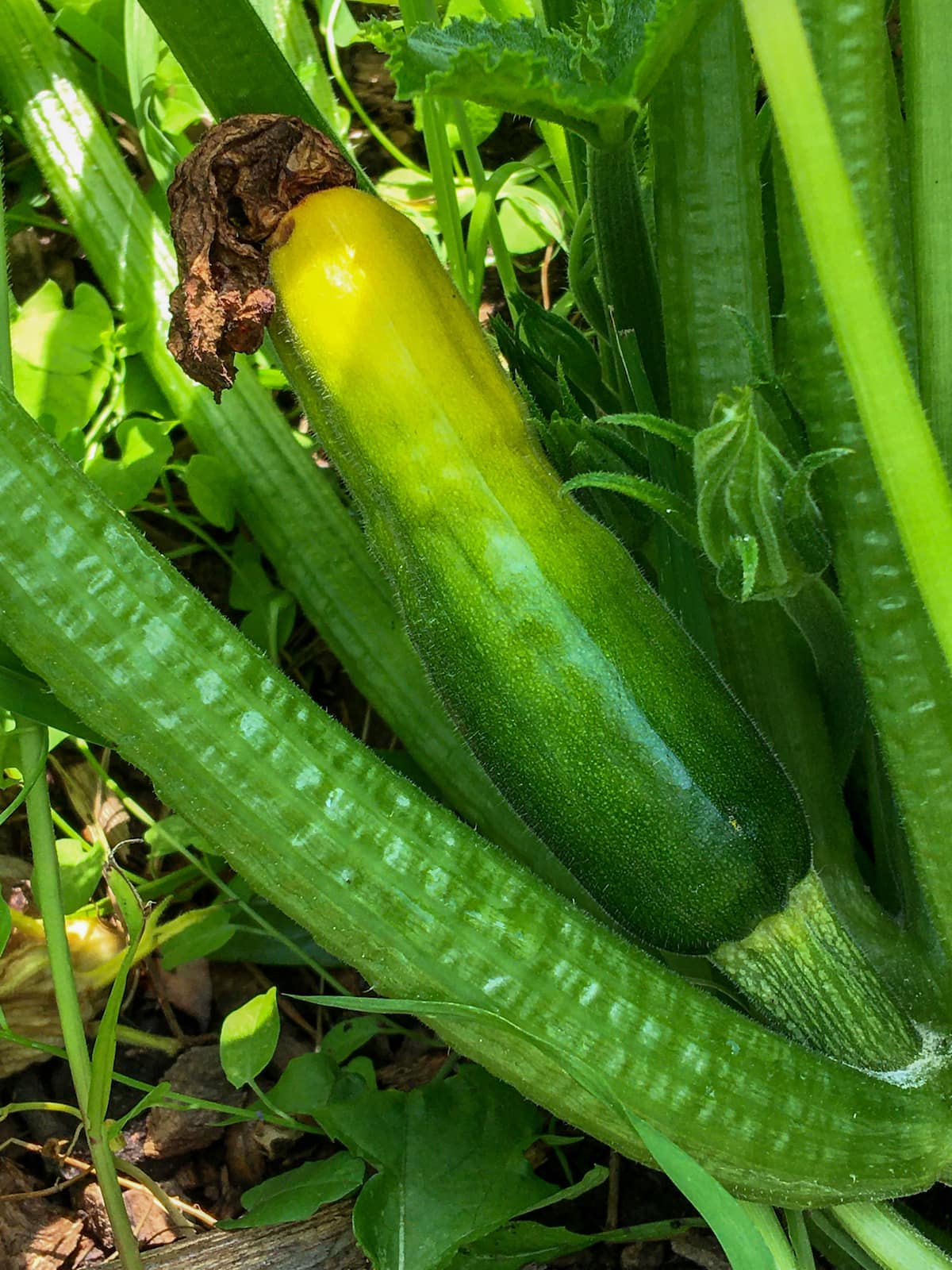
Excessive heat and high temperatures
Excessive heat and high temperatures can exacerbate zucchini end rot. When plants are exposed to prolonged periods of extreme heat, the rate of transpiration increases, leading to water stress. This water stress can hinder calcium uptake and contribute to the development of end rot.
To protect zucchini plants from high temperatures, it is beneficial to provide shade or use shade cloth during the hottest part of the day. Ensuring proper spacing between plants can promote airflow and reduce the risk of heat stress. Mulching the base of the plants can also help regulate soil temperature, keeping the roots cool and minimizing water loss.
Imbalanced nutrient levels
Nutrient imbalances can play a significant role in the development of zucchini end rot. Zucchini plants require a range of essential nutrients for healthy growth and fruit development, including calcium. Imbalances in nutrient levels, particularly excessive nitrogen or potassium and inadequate calcium, can disrupt the proper absorption and distribution of calcium, leading to end rot.
Regular soil testing is essential to assess nutrient levels and identify any imbalances. If nutrient deficiencies or excesses are detected, adjustments can be made through targeted fertilization or the use of organic amendments. Maintaining a balanced nutrient profile in the soil will promote optimal plant health and reduce the risk of zucchini end rot.
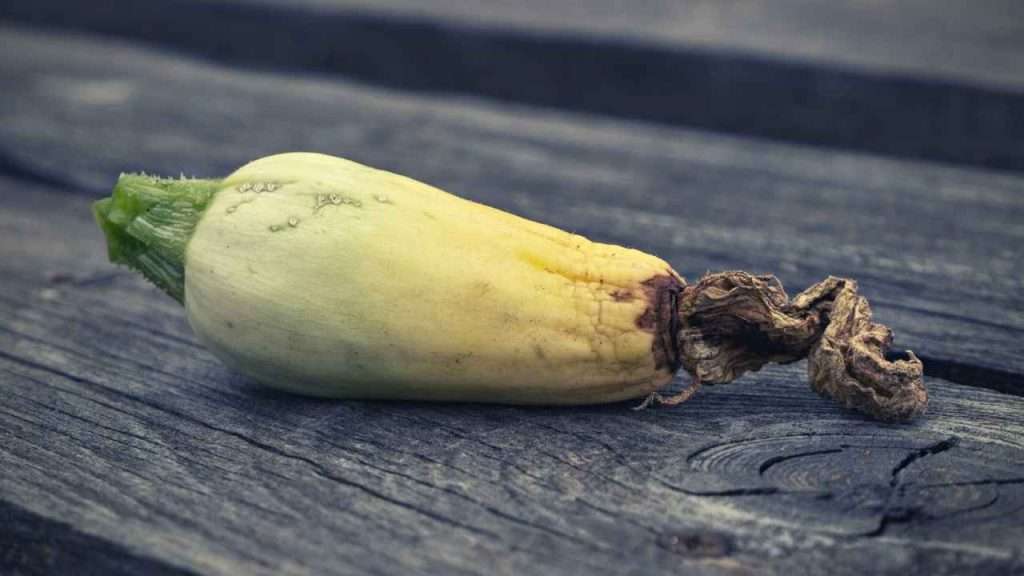
Poor drainage conditions
Poor drainage conditions can contribute to zucchini end rot by hindering the uptake and distribution of calcium and other essential nutrients. When the soil remains saturated for extended periods, waterlogged conditions can occur, depriving the roots of oxygen and causing stress to the plants.
Improving drainage is crucial for preventing end rot and maintaining healthy zucchini plants. Amending the soil with organic matter, such as compost, can improve soil structure and drainage. Creating raised beds or mounds can also help elevate the plants’ root zone and improve drainage. A well-drained soil will promote healthy root development and nutrient absorption, minimizing the risk of end rot.
Pest infestation
Pest infestations, particularly certain insects, can contribute to zucchini end rot. Some pests, like certain species of squash bugs or vine borers, can cause damage to the plants’ vascular system, disrupting the flow of water and nutrients, including calcium. This disruption can lead to end rot development.
Regular monitoring and prompt intervention are essential for addressing pest infestations in zucchini plants. Implementing integrated pest management practices, such as handpicking pests, using insecticidal soaps or organic pesticides, and providing physical barriers, can help prevent and control pests effectively. By managing pest populations, you can minimize the risk of end rot in your zucchini harvest.
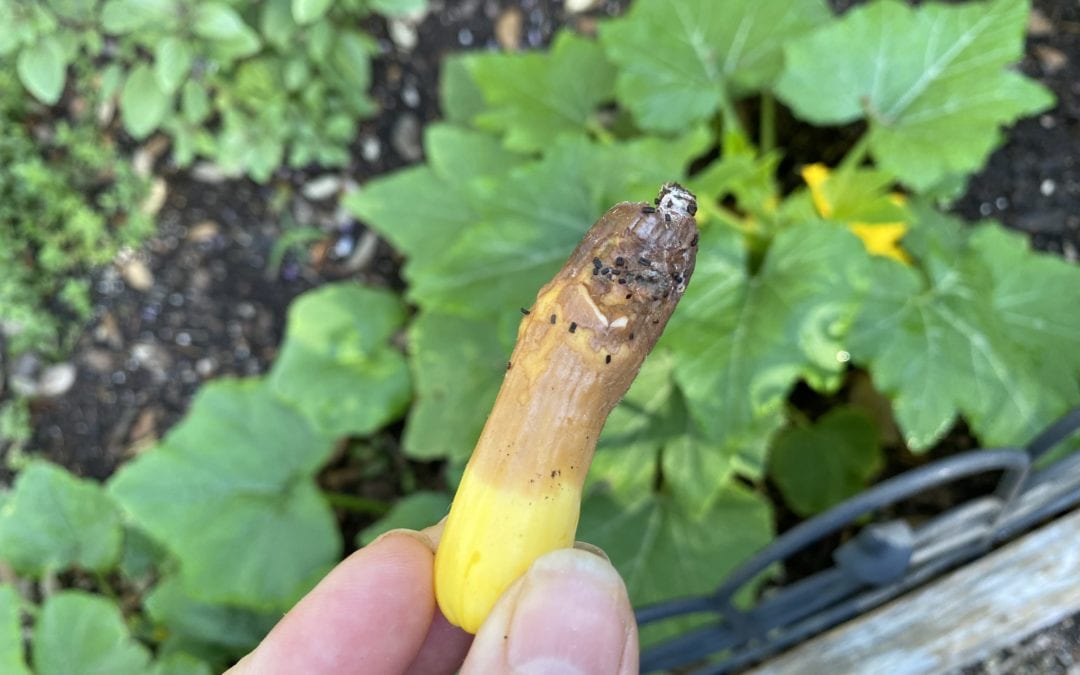
Improper fertilization
Improper fertilization practices can contribute to zucchini end rot. Over-fertilization, particularly with high-nitrogen fertilizers, can disrupt calcium uptake and increase the risk of end rot. Excess nitrogen can lead to lush vegetative growth at the expense of proper fruit development.
Using balanced fertilizers and following recommended application rates is crucial to ensure optimal nutrient availability and uptake. It is also important to consider the nutrient needs of your zucchini plants at different stages of growth. Adjusting fertilization practices based on soil test results and plant requirements can help prevent end rot and promote healthy, productive plants.
Genetic susceptibility to end rot
Genetic susceptibility to end rot is another factor that can influence the occurrence of this condition in zucchini plants. Some varieties of zucchini may be more prone to end rot compared to others, depending on their genetic makeup.
Understanding the role of genetics in end rot susceptibility can help in selecting resistant zucchini varieties that are less likely to develop this condition. Consult with local agricultural extension services, trusted nurseries, or experienced gardeners to identify varieties known for their resistance to end rot. Choosing resistant varieties can significantly reduce the risk of end rot and improve overall zucchini plant health.
In conclusion, zucchini end rot is influenced by several factors, including calcium deficiency in the soil, imbalance in soil pH, inconsistent watering practices, root damage or pruning, excessive heat and high temperatures, imbalanced nutrient levels, poor drainage conditions, pest infestation, improper fertilization, and genetic susceptibility. By understanding and addressing these factors, gardeners can minimize the risk of end rot and enjoy healthy, abundant zucchini harvests.
